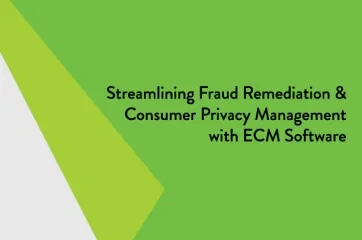Deposit documents are those documents that are necessary for establishing, maintaining, and supporting a deposit account at a financial institution. Certain deposit documents are created, collected, or distributed during the upfront account creation process, while others require ongoing tracking and/or action.
Types of Deposit Documents
Deposit documents vary depending on the customer, account, and financial institution but could be categorized as follows:
Account set-up and verification documents, such as the deposit agreement, signature card, customer identification profile (CIP), and ChexSystems verification report.
Customer or member-provided documents might include a copy of an LLC’s entity documents or an individual’s driver’s license. Marriage certificates, death certificates, and corporate resolutions may also be provided by customers/members in certain situations.
Disclosures inform customers and members about the deposit account’s terms, interest, overdraft charges, service charges, non-sufficient funds fees, and other vital information. Learn more about disclosures.
Authorization documents specify who is authorized to sign checks, withdraw money, make deposits, etc.
Statements and notices: Banks and credit unions provide deposit account customers/members with electronic and/or paper statements on an ongoing basis. Notices inform account holders about certain actions that may be required, such as providing missing information.
Deposit Document Technology
Banks and credit unions use a variety of technologies to create, distribute, and manage deposit account documentation. A few examples include:
- Document Preparation (“Doc prep”) System: Doc prep systems help bankers efficiently generate documents while ensuring compliance. Some doc prep systems offer eSign products, which streamline the collection of signatures from customers and members.
- Core System: The core is central to most banking operations, and deposit-related documentation is no exception. Cores are especially important for statements and notices.
- Document Management System: Storing documents in an electronic ecosystem, such as AccuAccount, can make it easier for staff to access signature cards and other deposit information from any branch. Some document management systems also offer exception tracking and notice letter generation, which enable additional efficiency.
Browse Additional Resources
Read more banking definitions or access a downloadable PDF, video or eBook from our Innovation Hub.














